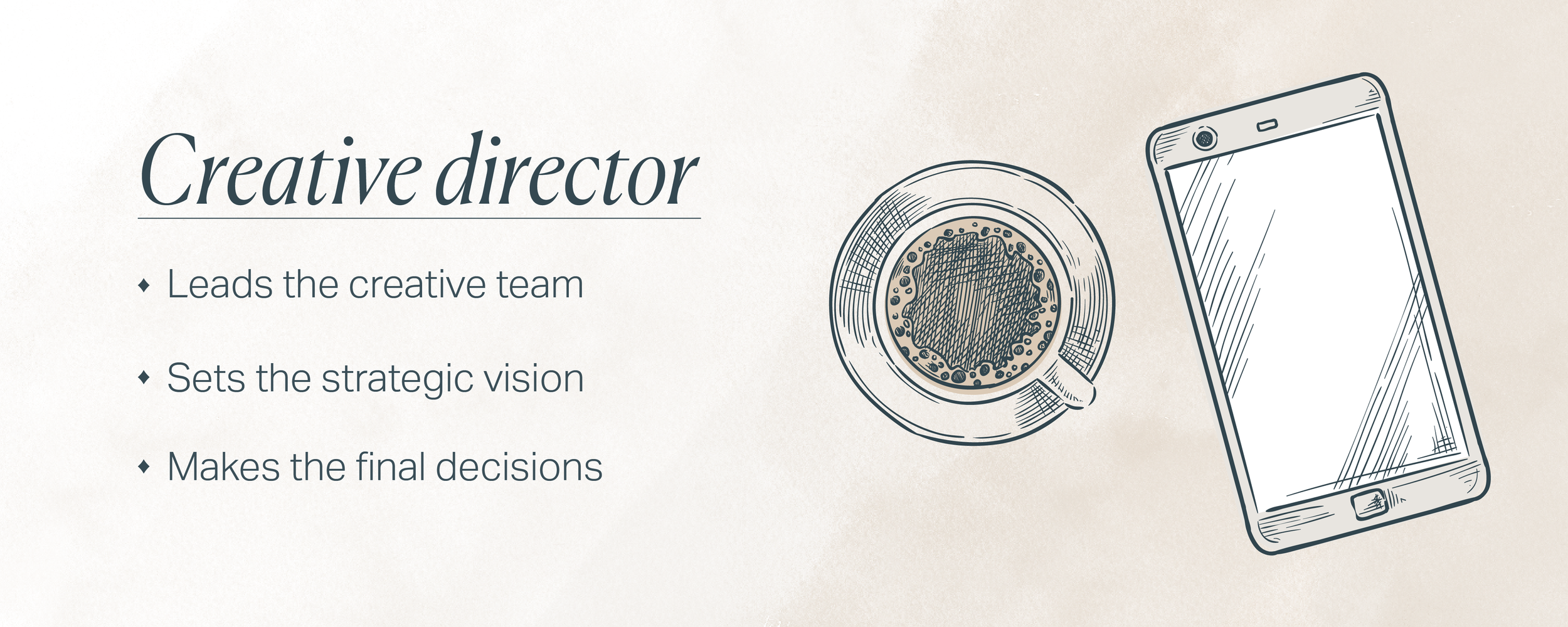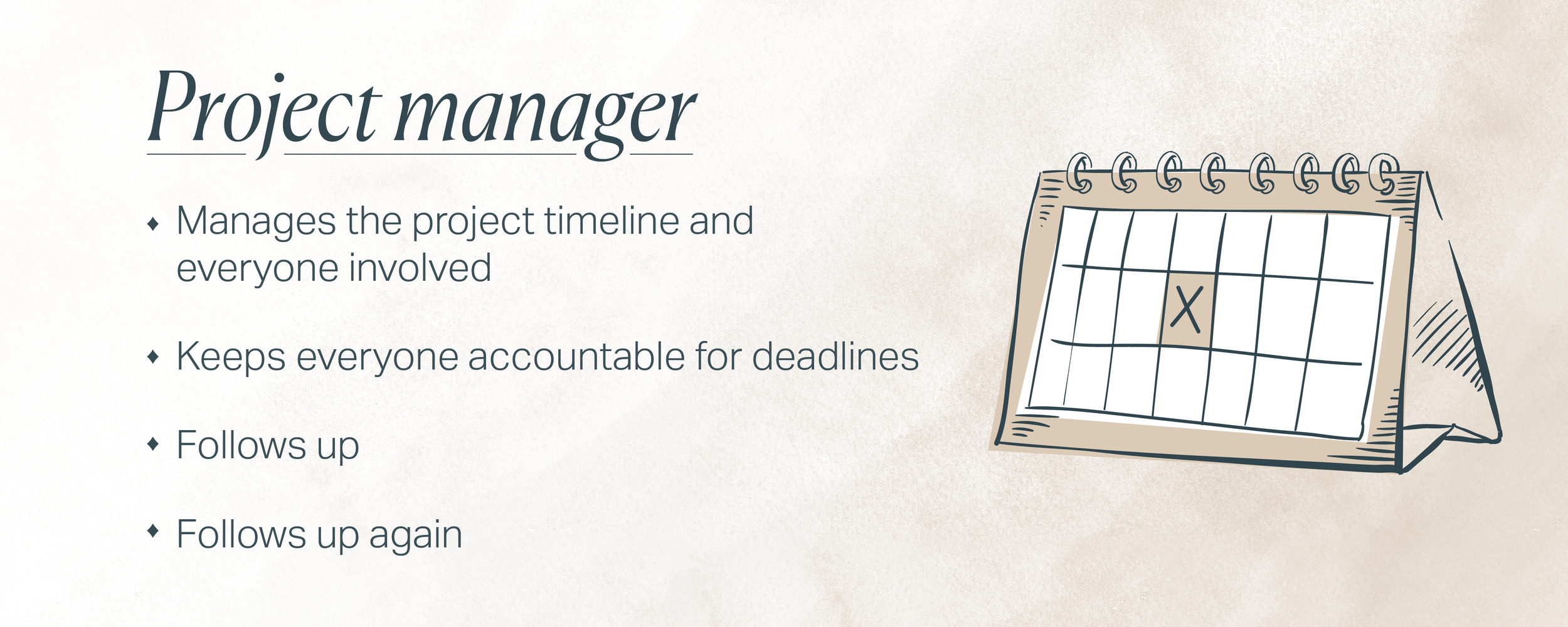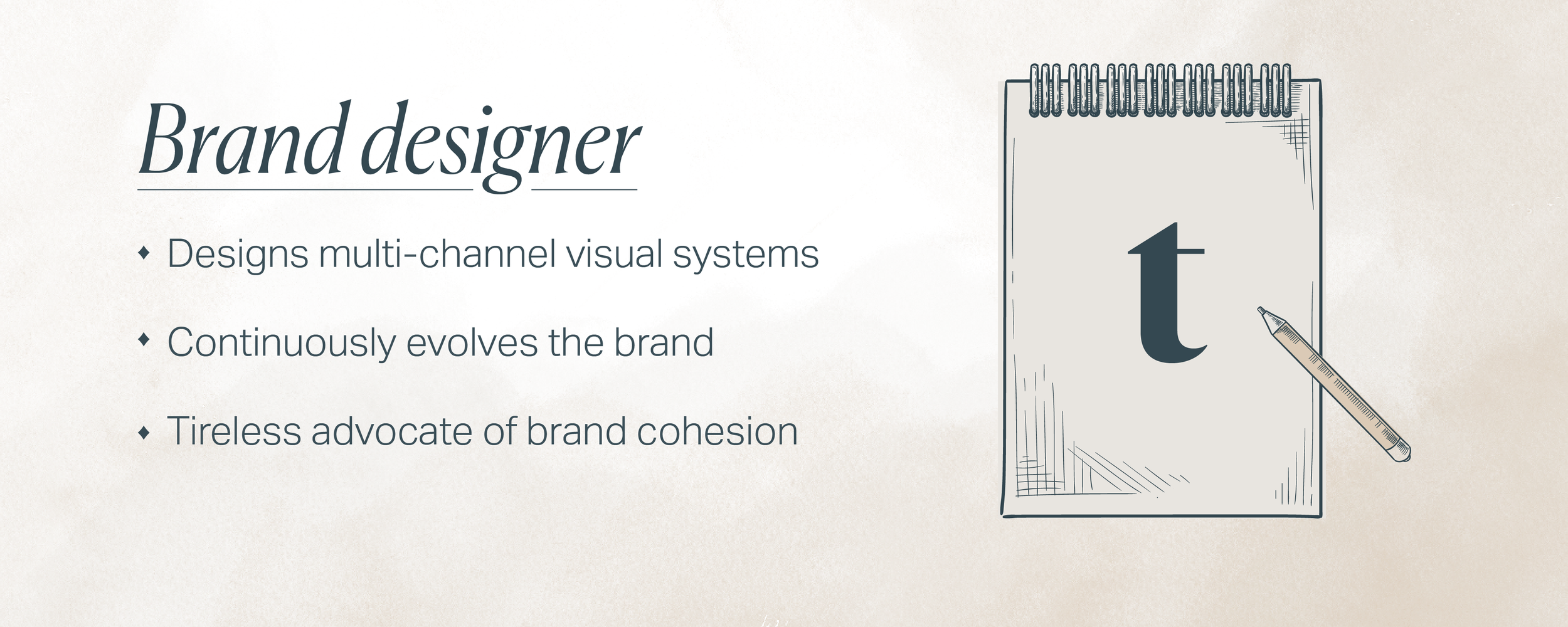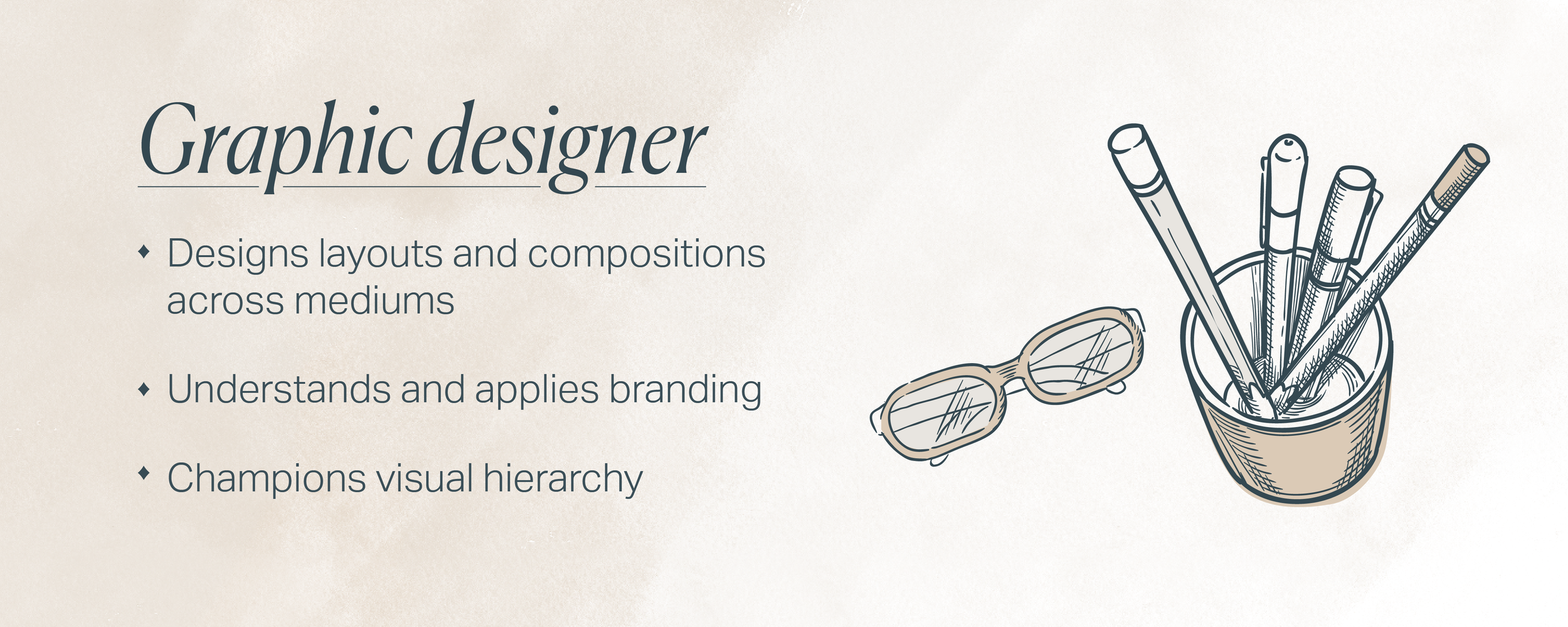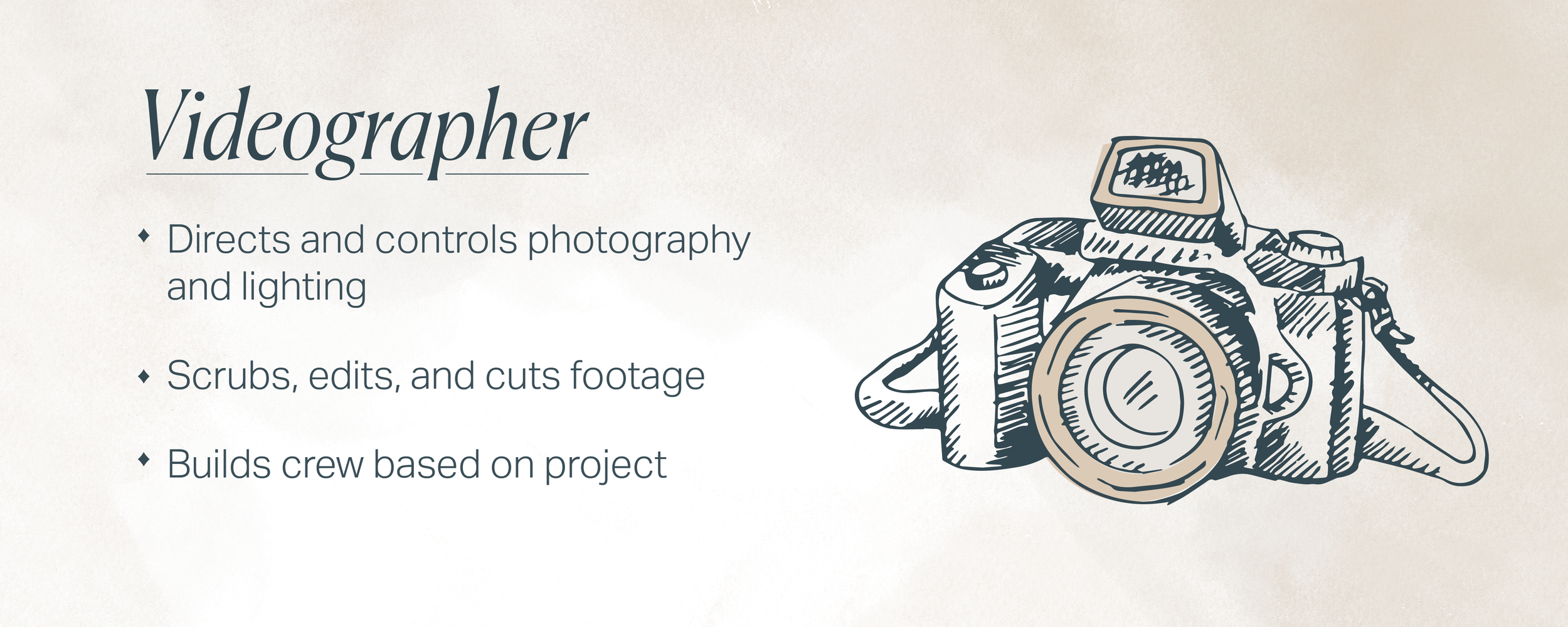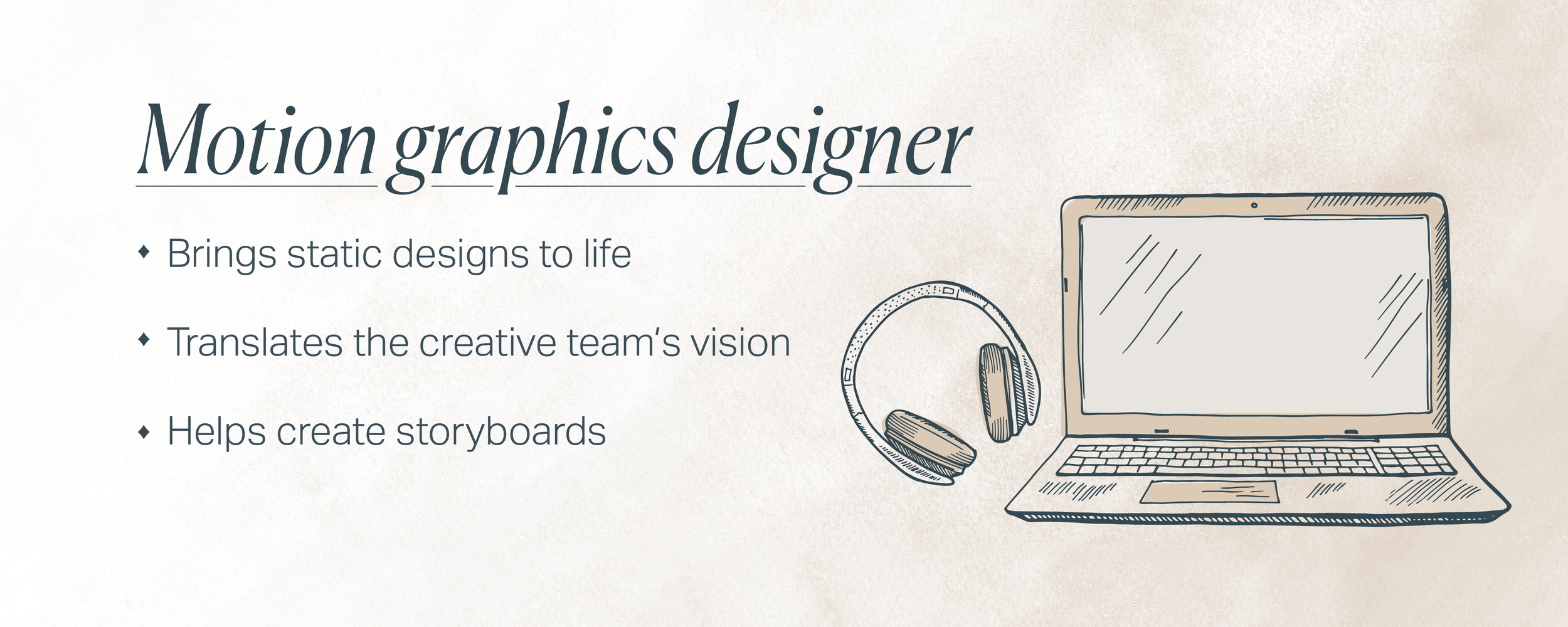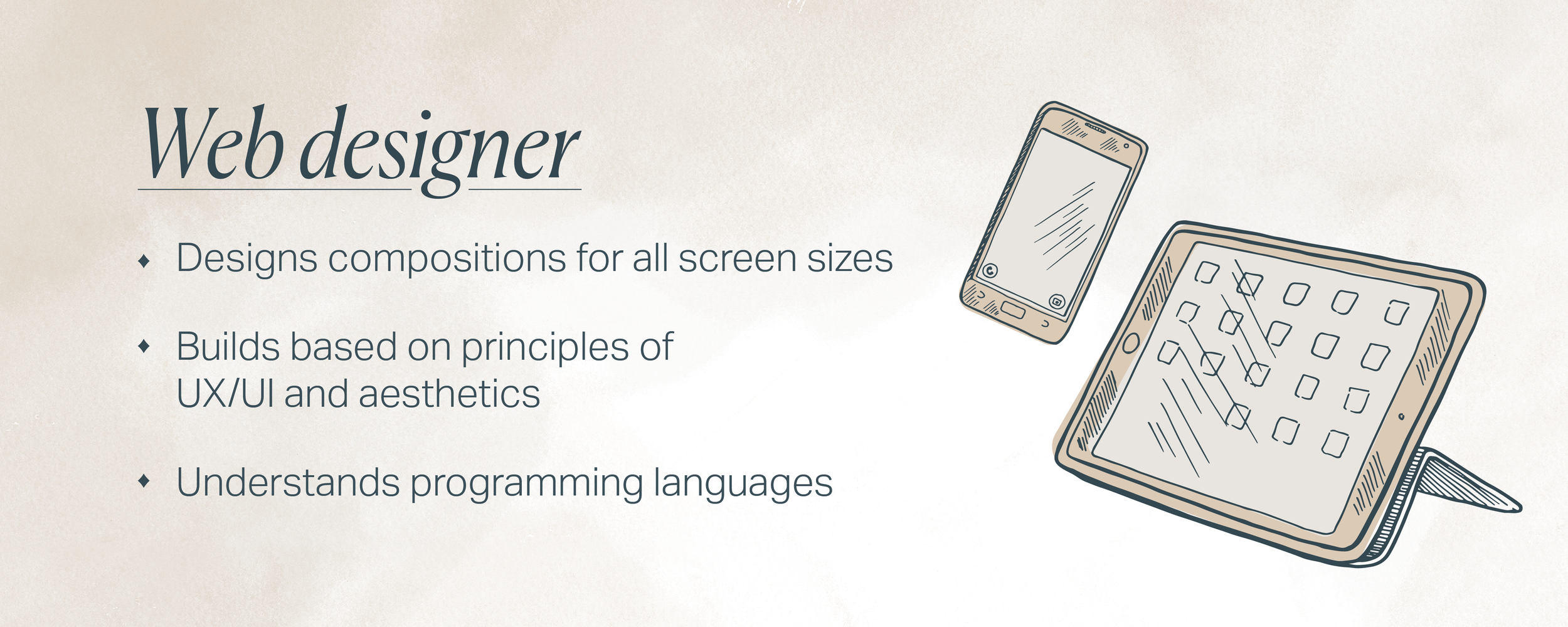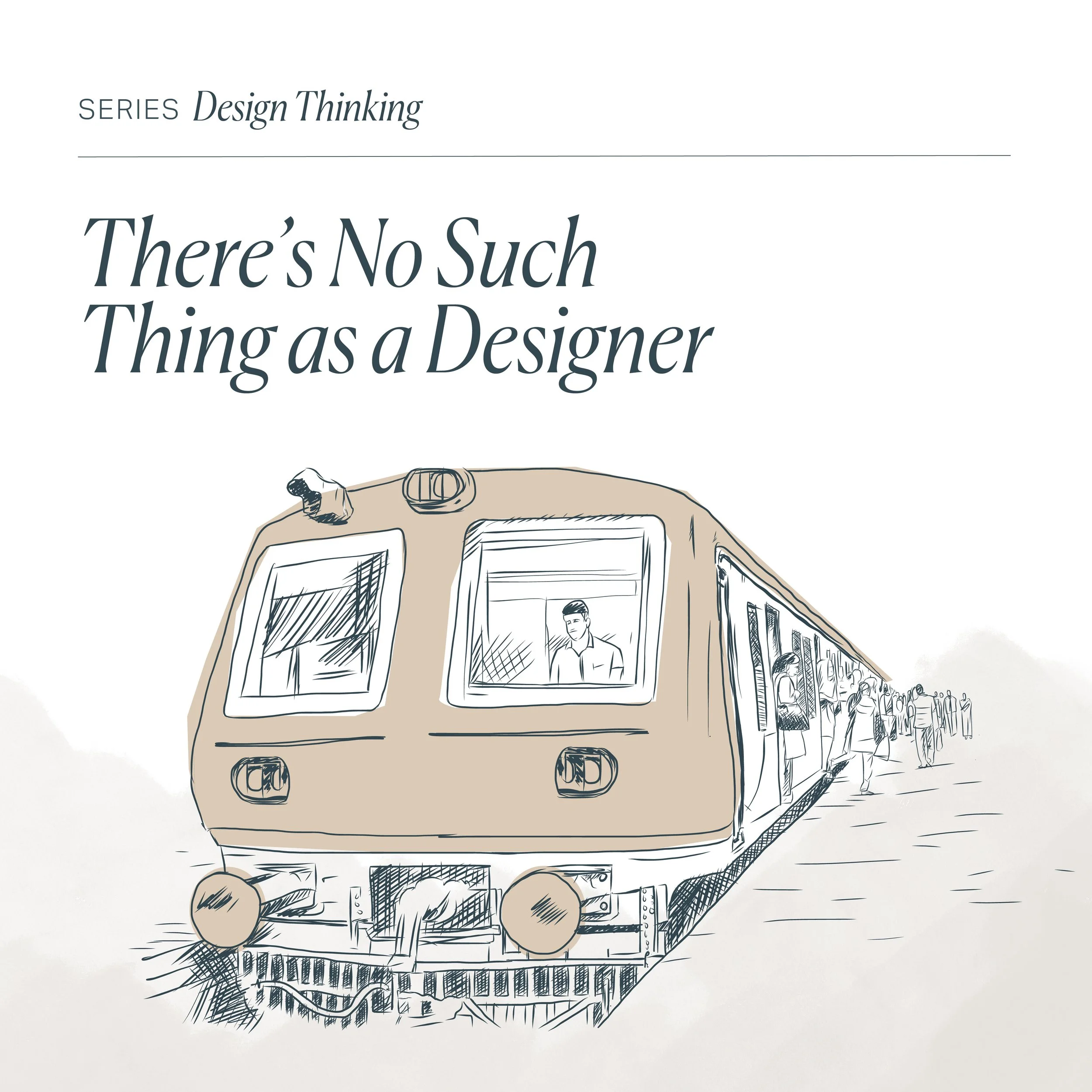There’s No Such Thing as a Designer
Chris Gillespie | November 16, 2022
If this article can convince you of only one thing, let it be that there is no such thing as a designer. None at all. They don’t exist. Whatever you think you see is actually a poltergeist rattling around in your team’s Adobe Creative suite. They’re entirely fictitious. And there’s nothing more harmful to creative operations than people continuing to think they exist.
So, let’s put that to rest.
Instead, the reality is complicated. Far too complicated for one label. There are many people who design things and they are design specialists. They are diverse and varied in their skills, acumen, and interests, and within each area of specialty, there are many sub-genres unfolding in an infinitely complex lattice.
Each design specialist excels at a few very particular pieces of the design project. Only collectively do they form a design team.
This is where so many marketers run into trouble. When someone assumes that all designers are alike and interchangeable, projects go poorly. For example, when a marketer borrows “a designer” from their product team to craft an ebook, and that product person, who’s put thousands of hours into onsite user experience and almost none into PDF layouts, gives it their very first try.
Let’s explore this idea through a hypothetical project that involves nearly every type of design specialist—a brand video and campaign.
Special thanks to Amanda and Clarissa, Fenwick’s Co-Design Directors, for guiding my thinking on this one.
Design projects are trains—with lots of people hopping on and off
If you want to produce a video for a big brand, and it involves lots of design, you can think of the whole project as a moving train. Many people are needed to run it. Some will hop on, then hop off.
While no one person can run the train on their own, it does benefit from a singular conductor, and that’s your creative director. They’ve got experience in listening to clients (internal or external), intuiting their goals and tastes, and imbuing the project with a unified, thematic vision. This is a strictly senior role, and if you’ve borrowed “a designer” from the product team, they’re probably inexperienced at this.
However, being inexperienced won’t stop that junior person from the product team from climbing aboard and saying, “I’ve got this!” Because they don’t know what they don't know. They’ve been told to drive the train and so they’ll try. But when you check in, you’ll probably find them watching “how to” videos on YouTube.
The junior driver problem is further compounded if you’re relying on a freelancer. Their livelihood hinges on saying yes to projects, and they’re not in a position to kick back or express their doubts. (My approach: Flee from the freelancers who say “Yes” to everything. Flock to the ones who sometimes say “No.” Only the latter can be trusted to know their limits.)
You need a creative director to provide clear and singular leadership
Let’s say you’re lucky enough to be assigned a creative director, and they’ve got it under control. They know how to signal, switch tracks, and stop. They have a plan. And they know that “a video” will mean you need a partially animated explainer video in multiple output lengths, but also:
A campaign plan
A microsite to host it
An ebook to capture visitors’ emails
Social graphics and copy to promote it
Emails to announce it
To do all of that well, the creative director is going to need help.
You need a project manager to build the campaign
Project managers (sometimes called “producers”) may not have a background in design per se. But they have a great eye for it, in addition to being skilled at driving trains. When the creative director paints a vision, the project manager decomposes it into tasks and assigns them to others. They’re the keeper of the due date, bringer of briefs and templates, and chief of work reduction. They’ll stay on the train until the end.
Together, your project manager and creative director will find a copywriter, a strategist, and a graphic designer (or some combination thereof), and bring them in to pitch ideas.
You need a brand designer to direct
Let’s talk about the microsite where the video will live. Will it be fashioned in your usual corporate identity, or should it get its own? Should it be a sort of “sub-brand” of the overall brand, with a distinct theme? Only a brand designer is going to know. (They act as everyone’s tour guide to your company’s brand identity. Or the brand police, depending on personality.)
The brand designer can offer a mood board and aesthetic direction to answer questions of identity and style. Meanwhile, the copywriter writes the script.
You need a graphic / production designer to build out storyboards
Let’s say our video has many scenes. The copywriter has an idea of what those scenes are, but what will they actually look like, shot for shot? You’ll need to know before you shoot—before you pick the set, even. A graphic designer will transmute the script into storyboards, and discuss it with the videographer.
You need a videographer and team to shoot the video
For most marketing videos, a videographer will probably also direct. (If they don’t, the creative director will.) But they too will need help. They’ll have an assistant (or two or three) who act as scouts and set designers to find, book, and decorate the film locations.
They’ll rent lights. Lug equipment. Frame the shot. Direct the talent. And over the course of a day or two, capture enough material to be confident they won’t have to schedule another shoot. (And they’ll know to back up all that work on an extra hard drive because losing it would be really expensive.)
You need a graphic designer, illustrator, and motion graphics designer to do post-production
Likely, the videographer will be the one to cut the video and arrange it into scenes. But how do speakers’ names appear below when they talk? How do you make up for that scene you didn’t capture correctly? Bring in more designers.
Working together, a graphic designer, illustrator, and visual animator can create cut sequences and even entire scenes, which are overlaid on the video.
You need someone with layout experience to create the ebook
Meanwhile, your landing page needs an attention trap, or “anchor asset.” As in, “Like this video? Learn more in our new guide.” To produce this, the copywriter and graphic designer should work together from the very start. (Don’t let a writer simply toss it over the fence, for many reasons.)
It’s also exceedingly important the graphics person has a background in layout design. Because, if they don’t get the information hierarchy right, the resulting ebook will be more difficult to read than if it were just a simple Google Doc. And if that’s the case, it may capture emails, but it’ll disappoint people post-download, and undermine your effort.
You need a web designer to create the landing page
Web designers are masters of web page information hierarchy. They know where someone’s eye is apt to go first, and use that to guide people through a page from the most important element to the least. Or guide them to an action.
They also know what interactions someone expects, and help you avoid doing silly things like placing a triangular video “play” button in a graphic that isn’t actually clickable.
How’d the video project go?
If you involved everyone in the list above, and your project manager stayed on top of things, I’ll bet it turned out great. But of course, reality is messy. And, budgets being what they are, one person can wear multiple hats. A videographer we know also excels at motion graphics. Fenwick’s own design directors are multi-talented in layout, graphics, brand, and illustration. But no one person can do it all. Because there’s no such thing as a designer.
If you want it to go well, you have to know that design specialties are an infinitely unfolding lattice, and there’s no way to know all the roles you’ll need except by first finding a senior design specialist to assemble a design team.
Otherwise, your happy, willing, borrowed junior designer will just create a slow-moving wreck.
MORE DESIGN STRATEGY
Want to keep in touch? We publish a twice-monthly newsletter about writing craft.

